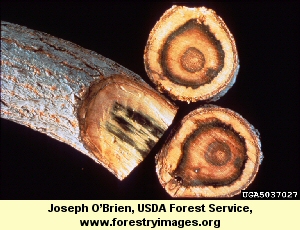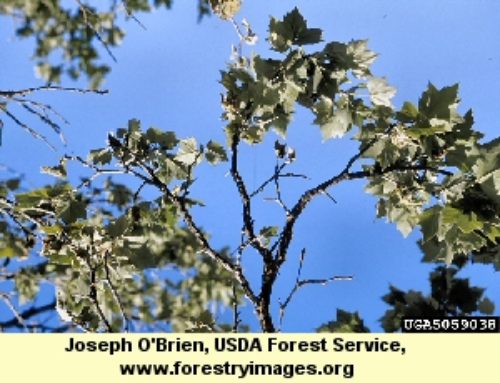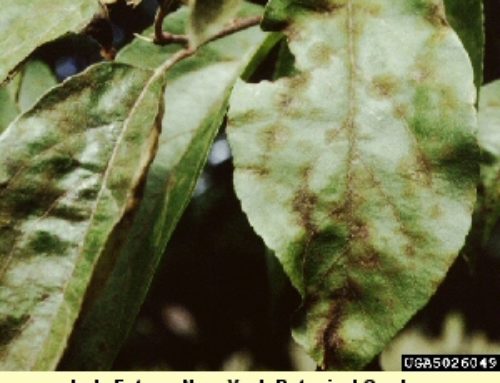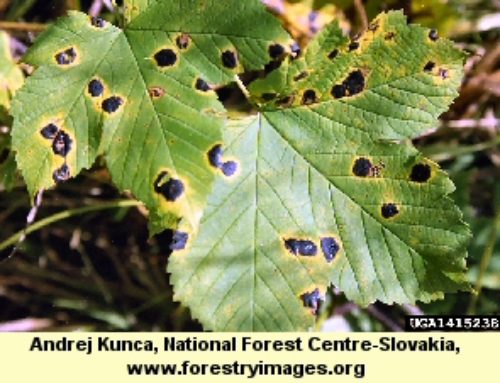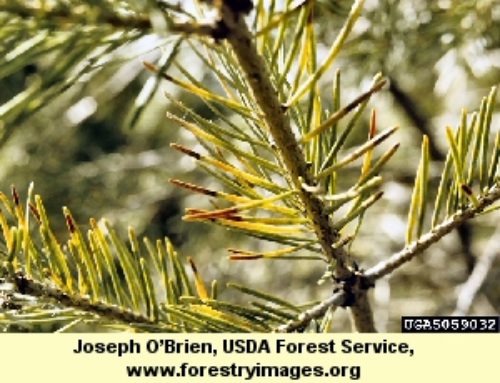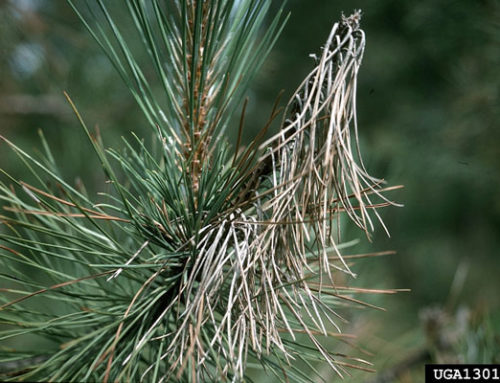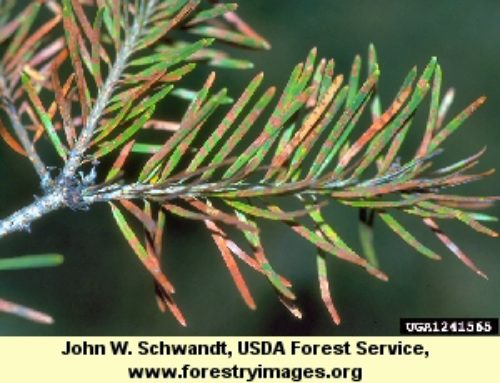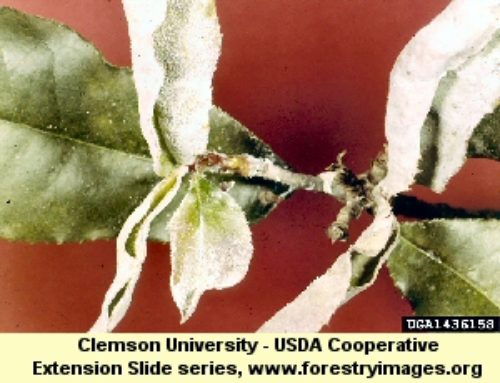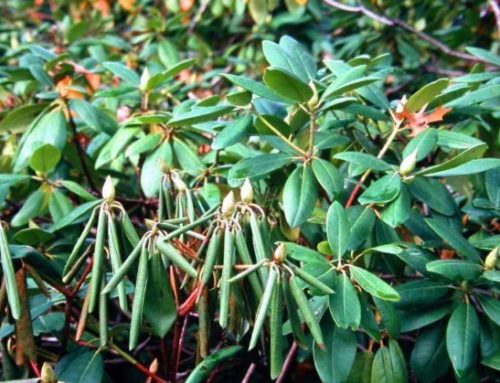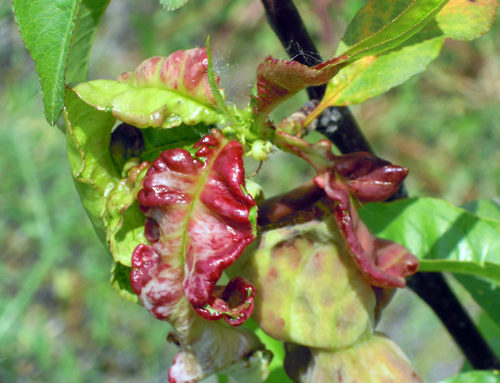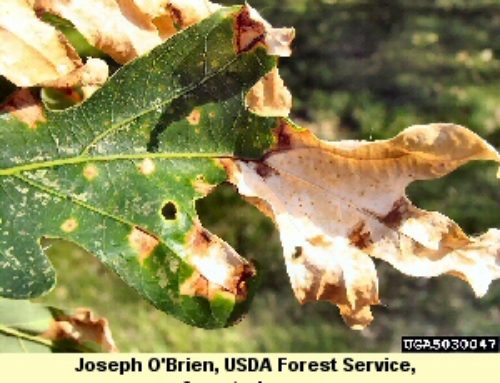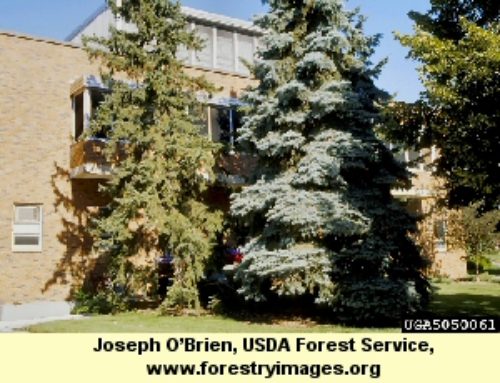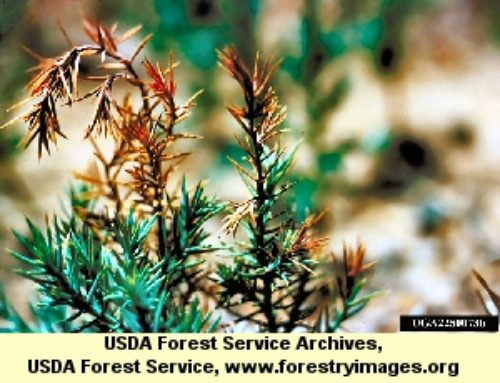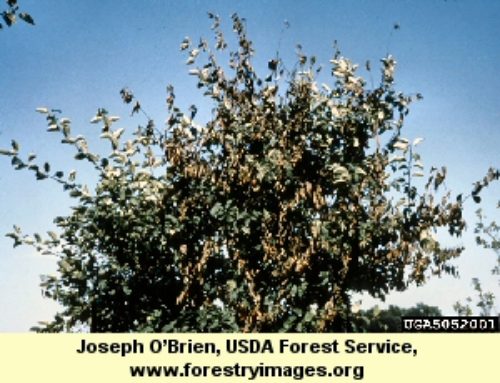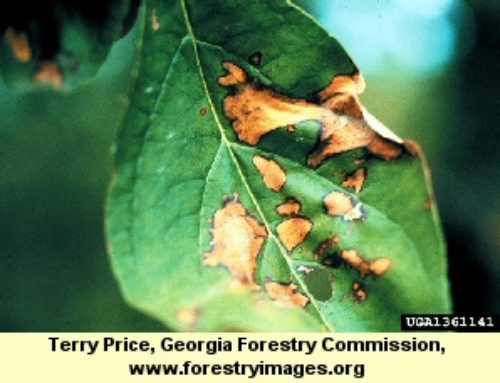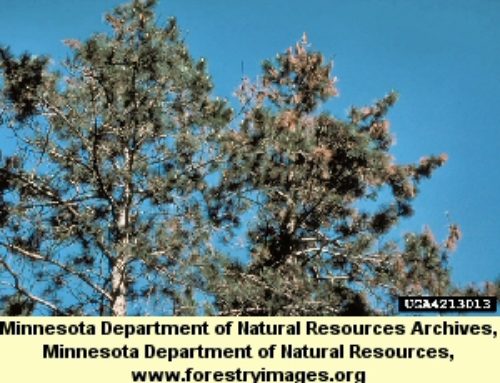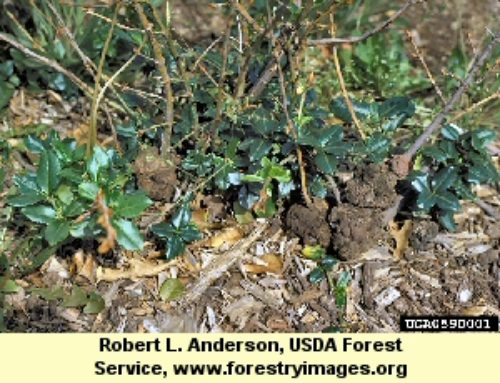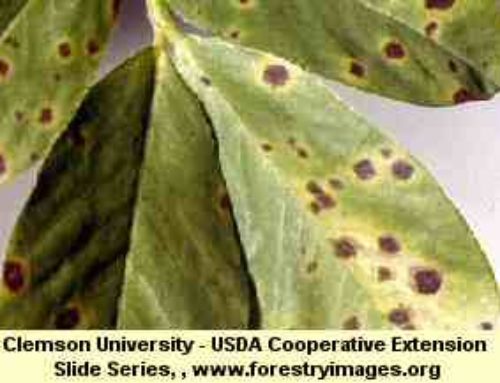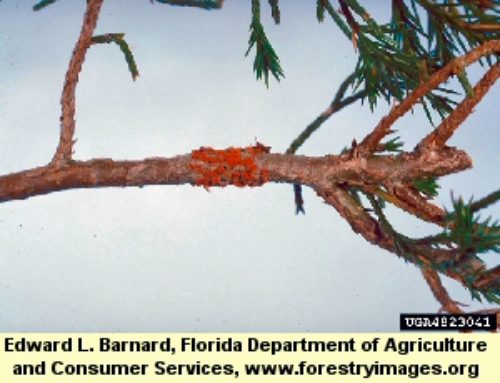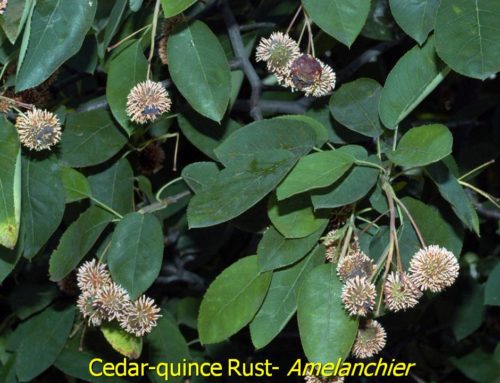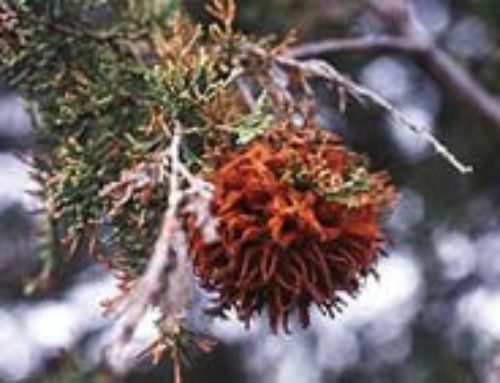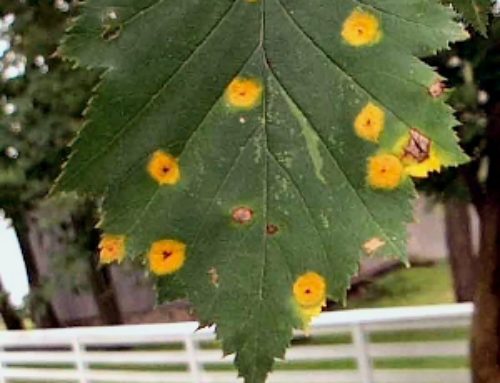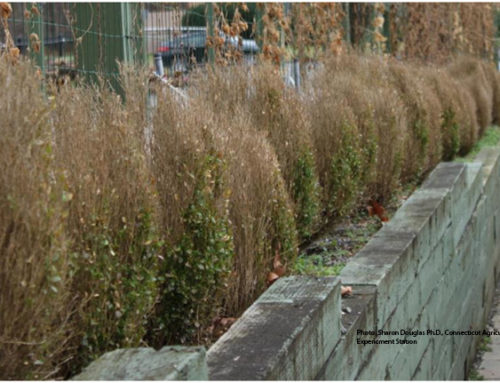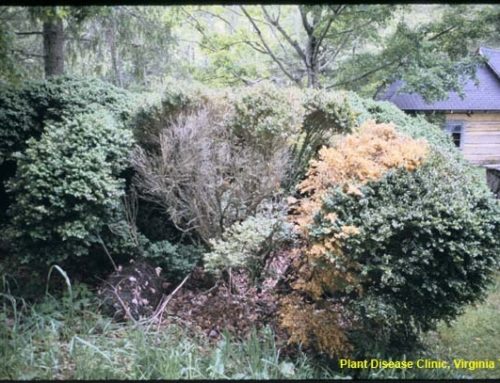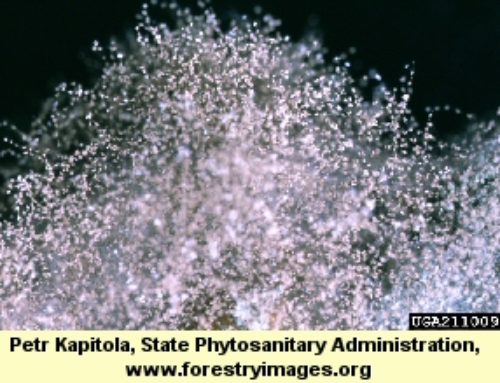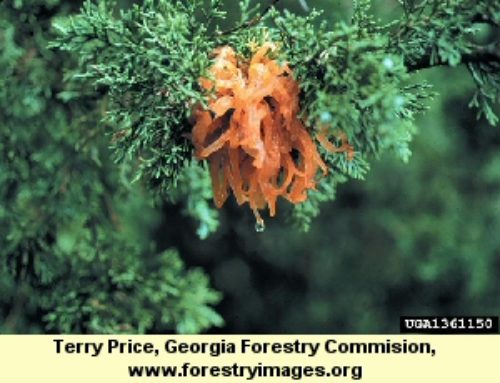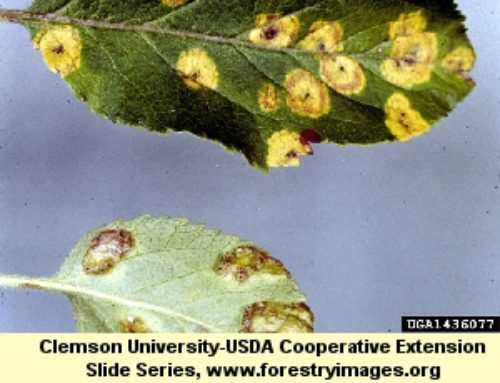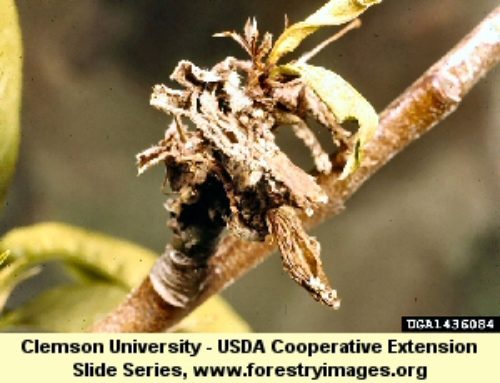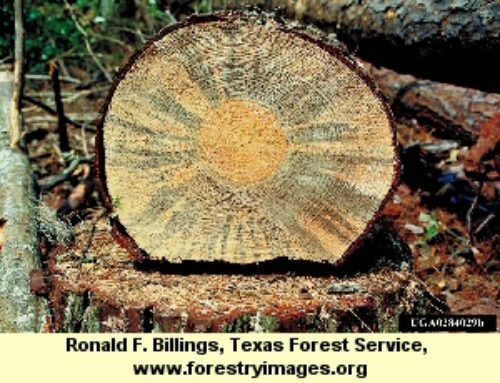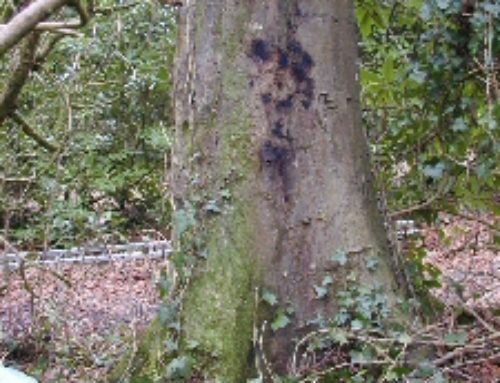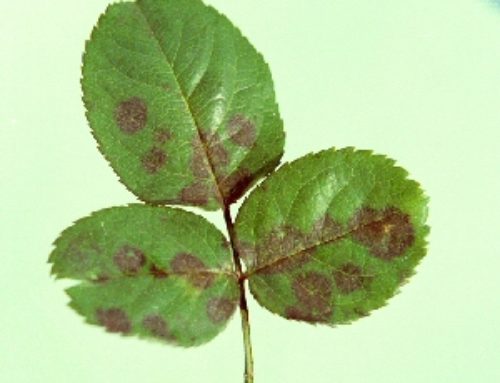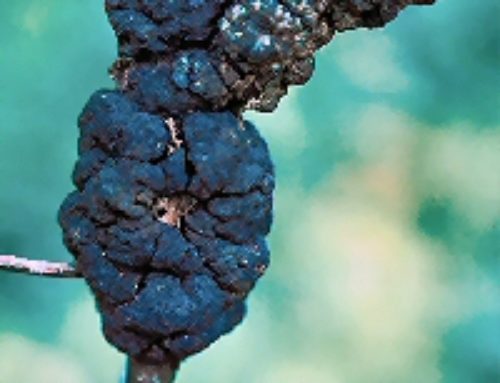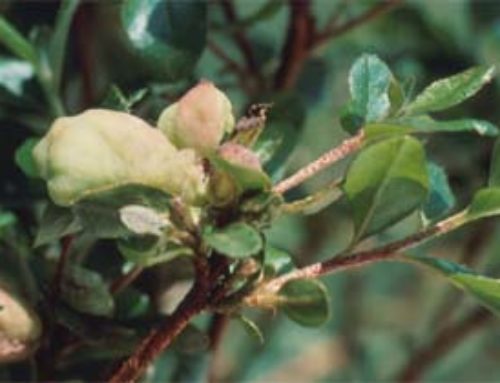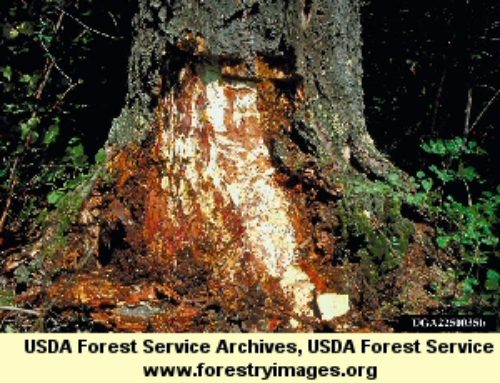Project Description
Verticillium wilt is a soil borne fungus that can exist in the soil almost indefinitely. In our area we see it most commonly on maple, ash, and redbud. Although verticillium wilt can be found in most soils, it is not usually a problem for woody plants in forested areas, but can be a serious problem in landscaped areas as infected soil is brought in by building contractors from other areas. The fungus causes a blockage of the tree’s vascular tissue, which in turn causes the wilting or flagging of foliage. Leaf curl, leaf and twig stunting, sparse foliage, premature fall color and interveinal browning are common symptoms. Leaves may drop while they are still green. Symptoms typically progress from the top of the tree downward. Wilted branches are usually few and scattered throughout the top of the crown at first, but as the disease progresses they are seen more often and spread downward through the crown. Another characteristic symptom of verticillium wilt is a green to brown streaking that can usually be seen in the cambium layer just under the bark if it is stripped away with a sharp knife. Unfortunately, there is no cure for plants infected with verticillium wilt. Death may occur rapidly or after a slow decline. To keep the plant alive as long as possible, prune out the infected branches (mainly for aesthetics) and keep it watered. A soil test to check on fertilizer needs is also a good idea. No soil or spray treatments have been effective.


